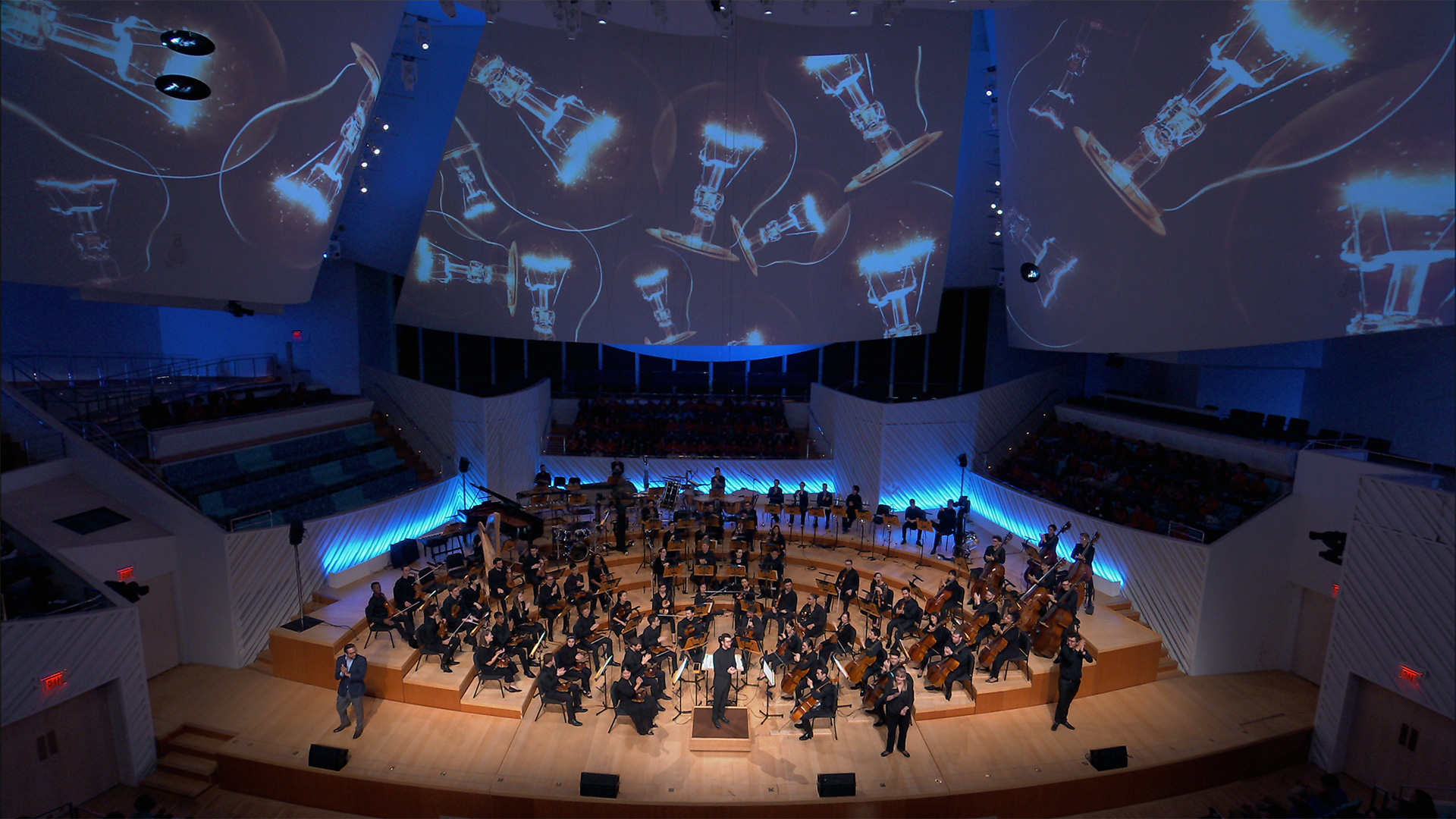Compositional Tools

Goals
Audience will learn key musical terms (range, dynamics, tempo, articulation) and be able to identify them both verbally and musically.
Overview
Define and musically demonstrate key musical terms (range, dynamics, tempo, articulation).
Process
- This activity should be performed early in the program, to introduce these musical concepts to the audience and be able to use the terms throughout the program.
- For the piece you are performing, introduce the composer, and then have the audience say their name, or title of the piece in contrasting range, dynamics, tempo, and articulation.
Audience Type

What does this activity look like in action?
Example Script:
Can you say “Beethoven” really loud? Really soft?… Piece: William Grant Still – Symphony No. 1 “Afro-American”
Performer: Who knows what a COMPOSER is? (accept responses). Yes, a composer is a person who writes a piece of music, just like an author writes a book! Composers use a bunch of different musical tools to write music. Who wants to learn about some of these tools to put in our toolbox?!
The composer of our next piece is named William Grant Still. Can you say his name with me?
“William Grant Still”!
RANGE:
William Grant Still wrote music that has *in a high pitched voice* REALLY HIGH NOTES, and also some *in a low voice* REALLY LOW NOTES. Do you know what that’s called? (If they get it – “that’s right!”) It’s called RANGE. Let’s write that word on our board. (Range – high and low).
So range is about how HIGH and how LOW the notes are. Let’s practice using our composer’s name. Let’s say “William Grant Still” in a HIGH pitch. “William Grant Still”. Ok, now let’s say “William Grant Still” in a LOW pitch. “William Grant Still”.
DYNAMICS:
William Grant still wrote *in a whisper* really quiet music, and he also wrote some *shouting* REALLY LOUD MUSIC. Do you know what we call loud and soft in music? That’s right, DYNAMICS. Let’s add that to our board. (Dynamics – loud and soft).
So dynamics is how LOUD or SOFT the music is. Let’s practice using our composer’s name. (Whisper and shout)
TEMPO
Our next term is about how fast or sloooooow the music is. Does anyone know what the term for the speed of the music is? TEMPO. Let’s write that on the board. (Tempo – fast and slow)
Let’s practice with our composer’s name. Let’s say “Wiiillllliiiaammmm Grrraaannnttt Stillllll” very slowly. Now “William Grant Still” very quickly!
ARTICULATION
Our last musical term is about how we play the notes, whether they’re really long and connected, or short and separated. Does anyone know what this is called? ARTICULATION. Let’s write that on the board. (Articulation – long or short).
Let’s practice with our composer’s name. Let’s say “William Grant Still” all gooey and long and connected. Now as short and separated as possible!

Modifications
- These terms can be introduced not as the main theme or activity, but simply scattered through the program.
Notes
- For a full program built on this concept: Scaffold these terms over a few pieces that might demonstrate these musical concepts. Use pieces that might make it easy to demo each musical concept (i.e. Brahms’ lullaby for smooth articulation, then staccato to show how jarring that would be). Then move to “Audience Composition Activity” to implement the terms the audience has learned.
Materials:
- A blackboard or easel with writing supplies to write down the terms we learn.
Create interactive performances. We have activities to help you connect with your audiences.


